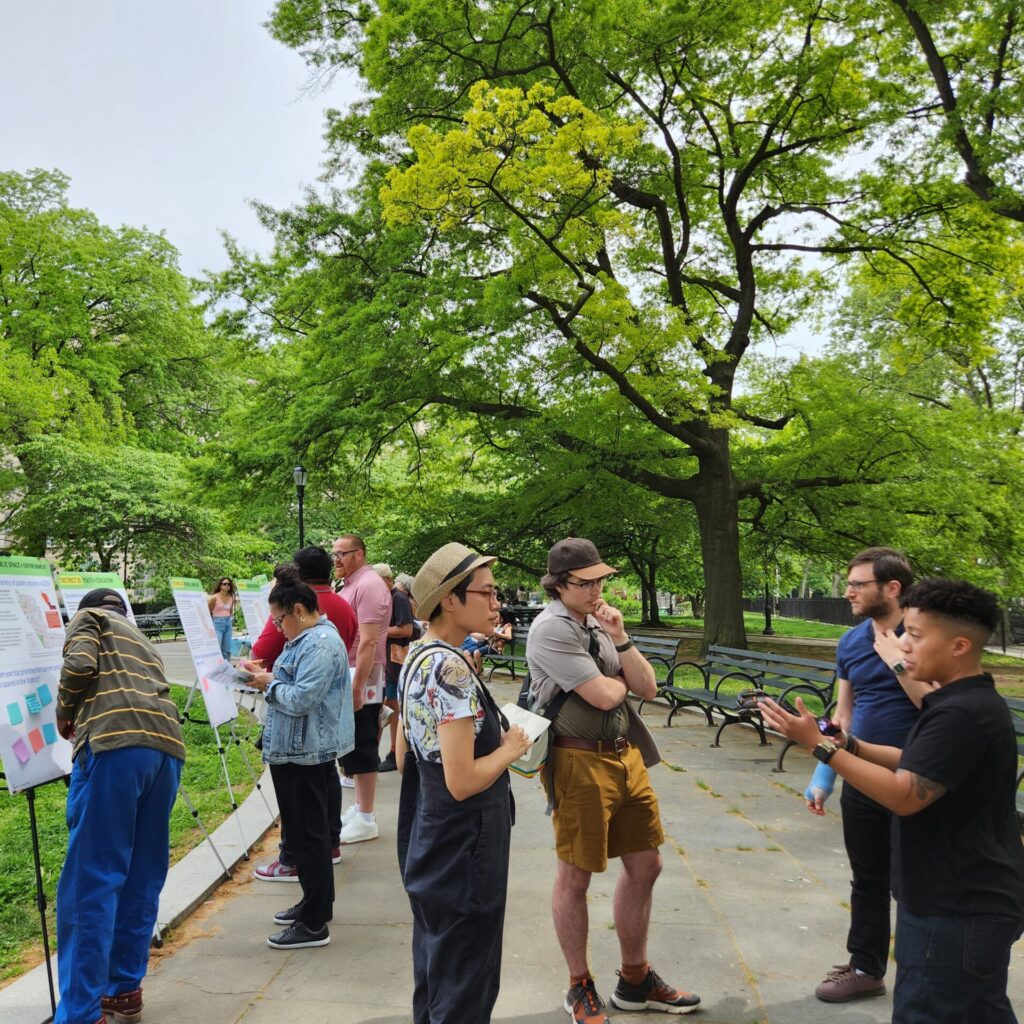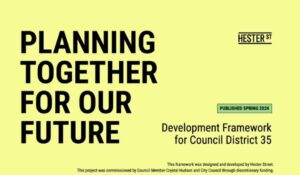In New York City, community stakeholders remain siloed from much of the City’s current land use decision-making process. Under the existing Uniform Land Use Review Procedure (ULURP), it is difficult for New Yorkers to contribute meaningful input for newly planned development in their neighborhoods. These conditions often fail to incorporate the community’s long-term needs and vision. Thanks to City Council funding championed by NYC Council Member Crystal Hudson and Council Speaker Adrienne Adams, Hester Street launched work in November 2022 to support a new, community-informed approach to land use planning that increases transparency and embeds community priorities in future development plans for Brooklyn’s District 35. Through that work, HST developed Planning Together for our Future: Development Framework for Council District 35, a novel land use framework to shape the district’s approach to land use planning.
To create the framework, HST reached out to over 1,200 constituents to source their priorities for land use and development throughout the district. Our team developed a survey that engaged 1,086 respondents across District 35, convened over 150 participants at 3 public meetings, consulted 6 focus groups for 45 district leaders, and hosted 4 advisory committee meetings with 12 members, as well as over 25 informal civic engagement activities. Community feedback from the survey revealed a number of concerns for residents, including rising costs associated with gentrification, a need for new affordable housing, open and accessible green spaces, and improved youth programming.
Published in April 2024, the framework introduces a set of community-established parameters and baseline criteria for community members, developers, and the Council Member’s office to guide decision-making, refine the ULURP process, and incorporate community input on neighborhood-specific priorities on land use in the years to come. Council Member Hudson’s office has committed to incorporating the framework into the ULURP process to ensure future development meets local needs, with the hope of influencing other districts to move toward similar practices.

